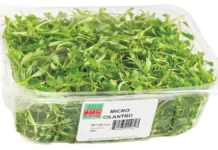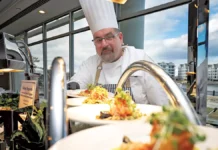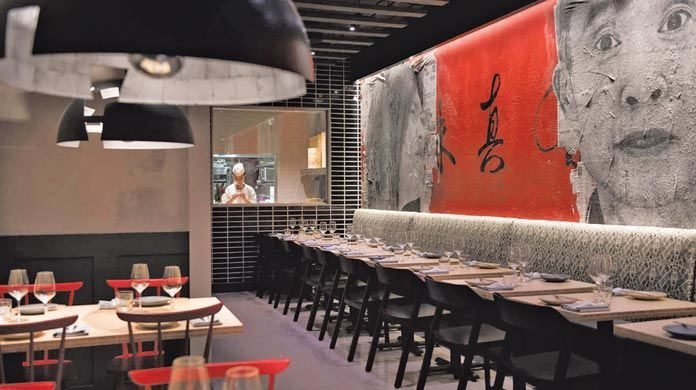

New York City may not be the dumpling capital of the world but the dumpling game in New York is nothing to joke about. Now this town has one more contender in the ring for the best dumpling in the city. Sean Tang, a first time restaurateur is behind the new Soho spot Pinch Chinese. Tang is bringing tradition and recipes that are engrained in the menu of Michelin star rated Taiwan-founded chain Din Tai Fung to New York.
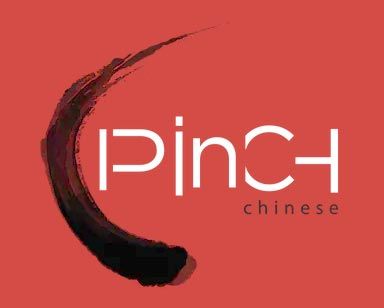 Pinch Chinese is already growing with excitement and anticipation, due to its coverage on Grub Street. Pinch debuted as #4 on Grub Street’s Restaurant Power Rankings and its raving reviews. But a big part of the excitement behind Pinch Chinese is with the talent that Tang is bringing in. Pinch’s kitchen is full of international talent like Charlie Chen, a former executive chef for Din Tai Fung who helped open the chain’s Shanghai locations along serving on its corporate-chef team. Tang also brought in several master chefs from China who have helped run Din Tai Fungs all over Asia. Tang has brought in the masters to give Pinch Chinese an unmatched level of authenticity.
Pinch Chinese is already growing with excitement and anticipation, due to its coverage on Grub Street. Pinch debuted as #4 on Grub Street’s Restaurant Power Rankings and its raving reviews. But a big part of the excitement behind Pinch Chinese is with the talent that Tang is bringing in. Pinch’s kitchen is full of international talent like Charlie Chen, a former executive chef for Din Tai Fung who helped open the chain’s Shanghai locations along serving on its corporate-chef team. Tang also brought in several master chefs from China who have helped run Din Tai Fungs all over Asia. Tang has brought in the masters to give Pinch Chinese an unmatched level of authenticity.
Total Food Service had the opportunity to tour the new Pinch Chinese restaurant and its’ efficient kitchen, as well as get the project approach from:
• Sean Tang, Owner, Pinch Chinese, New York, NY
• Leif Billings, Regional Director Northeast, Next Step Design, New York, NY
• Adrienne Yancone, Project Manager, Eimer Design, Philadelphia, PA
Sean Tang’s Approach:
I’m very proud of our new restaurant, Pinch. It’s a chain that was founded in Taiwan and my big challenge was to bring the same soup-dumpling gospel we have here, to New York. It’s pretty funny I was in Shanghai and thought that the Chinese food in New York would be better. So I had several conversations with Paul about bringing authentic Shanghai Chinese to open here and it just kept evolving.
Our chef, Charlie Chen, is from China, from Shanghai, he’s been there for the last 16 years working as an executive sous chef and growing into the executive chef position with the Din Tai Fung in Shanghai. He left them formally to join our project, having, at the time, overseen two of their kitchens in Pudong, Shanghai, which is the Wall Street of Shanghai, where all the multinationals have their offices, where all the banks have their offices. It’s a big corporate crowd, with a lot of pressure to produce every day and a lot of the highest paid and very demanding customers.
He brought with him six other chefs, all of whom had never left China before to come to New York to open Pinch. So we have a team of seven from China and hopefully many more coming down the road. We didn’t really have to tweak much to begin making it in New York. The base of what we do, our star attraction, is the Dim Sum and the Dim Sum is well regarded throughout the world. Din Tai Fung has close to 100 locations throughout mostly East Asia.
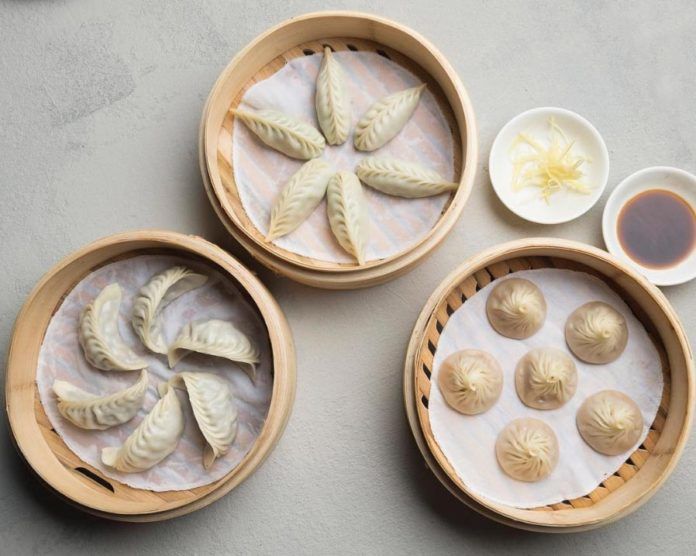
Now with the location I had been looking for a space for a little over a year. We looked everywhere, from Midtown, West and East, through the East Village, Greenwich Village, Chelsea and we narrowed it down to a few places. Chelsea was one that we really liked, it’s an up-and-coming neighborhood, but it’s not quite there yet for this type of cuisine, for this price point. So we found a neighborhood in Soho that has the best of everything, most notably, great residents. The residents we’ve met, they’ve lived here 25, 30 years. A lot of them bring their kids into the restaurant. We get a great mix of tourists and New Yorkers also, shopping all four seasons of the year.
In terms of the kitchen, Chef Ken sketched out a rough idea of what a kitchen of our design would look like. He spec’d out the things he wanted and the arrangement he wanted and they fit it into the space. It really was a marriage between the two visions. But the main thing we wanted to accomplish coming here was a showroom for the Dim Sum folding. All of our soup dumplings are made to order. They must be made no earlier than they’re steamed and consumed because the skin starts to break down. There’s a showroom, an open part of the kitchen that’s behind a panel of glass. It’s a large open room where our three or four dim sum chefs are folding soup dumplings throughout the dinner service. Other than that, it’s a closed kitchen. Chinese kitchens tend to be closed because woks when they’re turned on — when you’re in the space and there’s no music and there’s not people talking at dinner – are like a jet engine. You can hear it throughout the space.
Our layout was another beast to tame, we cut it into thirds. We’ve got the lounge in the front third, the bar in the middle third, and the dining room in the back third. I designed what we called “the wood portal.” They put 2x4s of bamboo randomly perpendicular to the wall so they’re sticking out of the wall and the ceiling on both sides like a frame. They spaced the bamboo out every six to eight inches and so we got what we call the portal. It sits right over the entire bar area.
The front area to the back area has this distinctive separate feeling because of the bar. And we wanted this feeling because we wanted it to be a place where you get that really quick al fresco dim sum and drink. And then in the back is where you have your full dining experience – which I think is what Soho looks like. I can just pop in for a drink; sit there in front of a window. That’s what we’re trying to be. We were very adamant about creating a neighborhood experience.
Ultimately, the reason restaurants succeed or fail is whether or not the neighborhood takes to you. You’re going to get the people who dine here once a year from another neighborhood, from Brooklyn or from up from the West Side or wherever it might be and that’s great, we’re always welcoming them, but the neighborhood will determine whether you succeed or fail.
Some of those local neighborhood touches include a change; we just recently changed to plastic chopsticks. We were using bamboo chopsticks before that were a one- time use. We switched, just for ease of waste. It got to a point where we were throwing away too many chopsticks and it was just becoming a hassle for our entire team. So, we switched to red plastic chopsticks, which match our clothes, red, black and grey.
One aspect that is very unique to New York is the bar, the kind of bar/dining culture that we have here – the bar being a lot of times the heart of the restaurant. And that’s not the case with Chinese restaurants in New York; it’s a very separate kind of experience.
You go to the typical Chinese restaurant and you’re probably getting a beer, Tsingtao, or you’re getting a soda or you’re getting water. We have Tsingtao in the bottle, we have soda on tap and we have obviously water but, surprisingly, having alcohol with dinner is much more prevalent in China than it is here, the drinking culture with dining. China is now the world’s largest consumer of wine. And so, creating a full dining experience, with a really thoughtful wine list, with a really thoughtful cocktail selection, was really important to me.
We’re very happy with what we’ve ended up with – a very, very laid-back experience, but one where you can still get that full New York dining experience.
Leif Billings’ Approach:
When we first got in there, the original plan was for a quick renovation of this existing restaurant kitchen. Once they closed we were basically going to just flip it around with some minor upgrades, new bar and dim sum display room. We really wanted to get Sean and his team in there right away. But as we got deeper into the project we found that there was a lot of equipment and infrastructure in really bad shape.
This project ended up turning into a complete renovation of the first floor and the cellar level prep kitchen. Even though this restaurant had some issues, it was nothing out of the ordinary for New York City. My team and I just thought of it as fun challenges. We had a major issue with beams that were holding up the kitchen rotting from the wall and settled down on the top of the walk-in box. We were hoping to reuse these walk-ins but after they were shut down they literally fell apart. We ended up ordering replacements. When the existing boxes were demolished we found out they were holding up the kitchen.
On the equipment side of things, I knew I had to be realistic about what will last and what would not. It may be a bit of a cliché but you know what they say, they don’t make things like they used to. A lot of the equipment you see today just does not last like it used to. It’s a difficult realization because you can get ambitious when you are trying to save money for your client.
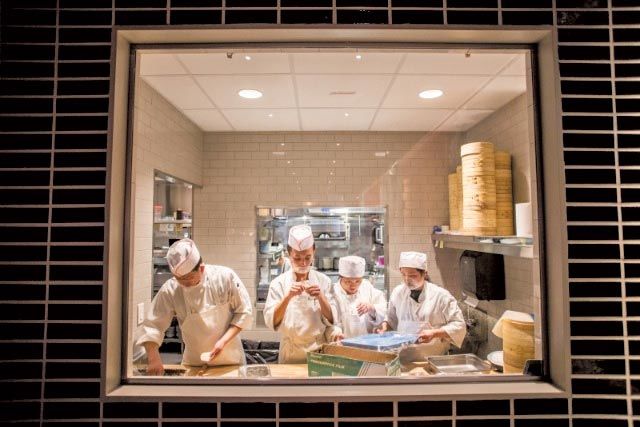
What I really enjoyed about working with Sean is that he was very hands-on. Even in terms of the Chinese equipment he would go out and purchase from Chinese vendors on the Bowery. He got his own special wok, dim sum cookers; duck oven, special vegetable washer and ginger grinders all purchased on the Bowery. Even with everything Sean had purchased we still needed to get more firepower for the kitchen. We created a dim sum station with the noodle cooker and dim sum steamer. Under the rest of the hood we put in a range, steamer, candy stove and a fryer. Even with such a tight kitchen we were able to squeeze everything in there for an optimized space and most importantly functionality.
It became all about getting open, we went with Joel Kaplan from E. Friedman who was our kitchen contractor and was brought in early in the project to lock in pricing and get shop drawings moving, and EMI for stainless steel fabrication because they had the best lead time and were local. On the cold side we had to replace the walk-in boxes with four new Kolpak walk-ins in four different sections. We set up a beer section, a duck drying room, a freezer, and a cooler section. The duck drying room is still in the works too, because they’re going to be doing very authentic duck, they’re still going to add UV lights, a humidifier and a special blower fan. We added two Hoshizaki ice machines, one large cube machine and then another flaked ice machine.
The kitchen itself was very small so we really had to optimize our space. One big thing we had to consider was to not bring the wait staff into the kitchen. It was already jam packed, so it really was impossible to have wait staff in the back of the house so a front of house dish drop was wedged into a small alcove. The last issue we were faced with was the bar, we did not have a lot of depth so were only able to do an 18 inch deep backbar. It actually worked out really well because Perlick now has an 18’’ backbar refrigerator that we put in and the bartenders love it! Pinch was an extremely fun project to work on. Sean is dedicated, ambitious and had a real vision of what he wanted.
Adrienne Yancone’s Approach:
When we went through the existing restaurant for the first time I realized that Sean’s vision was to take this really long and narrow space and gut the entire thing to really fill up the space. The real challenge was trying to capitalize on that challenge of that long narrow space. We wanted to create something that was welcoming but had a modern feel. We were serving dim sum, a very traditional Chinese dim sum, so we really wanted to put a modern take on it.
We created just that, a combination of traditional and modern spot on a very Chinese street food vibe that felt comfortable being in Soho. Sean had a vision in a three part concept, he wanted it to feel familiar with a touch of contemporary design with a little bit of “mystery” but still feel vibrant and approachable. After we have pinpointed the conceptual strategies we wanted Pinch to have, we started to build up color pallets, textures, and a feel for materiality.
Red was always a big color for us, mainly due to the traditional meaning behind the red color. We knew we wanted that to have a really big accent, Sean had this vision of a red concrete wall because he felt the rough red spoke to the tradition but also gave it an urban feel. The red concrete really became the main piece and we just built the rest around that space. The concrete accomplished almost everything we wanted to showcase in the restaurant; it was modern, contemporary, urban and traditional all at the same time.
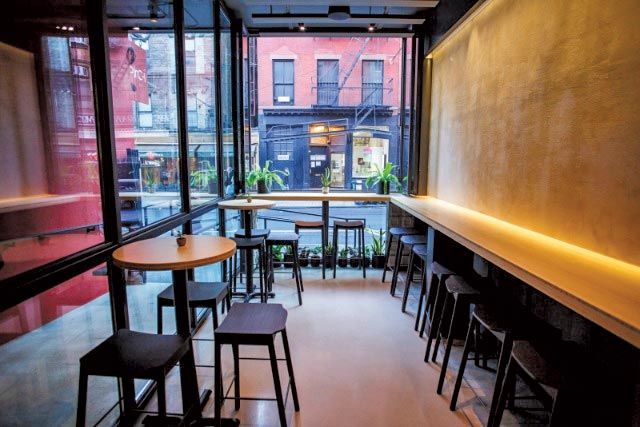
The next aspect we needed to solve was that long narrow space. Sean always had this idea about almost building on that long narrow space with an almost runway feel. We wanted to have this really centralized circulation path that would work as the walkway for service and customers. For the floor color itself we decided to play off the red concrete wall and have a lighter natural concrete color for the floor.
It was a real challenge to create a mysterious feel while still having warmth. For the mystery we kept the dark shell to the space, with dark ceiling, dark walls, and this big red concrete wall that just pops. For the warmth in addition to the light concrete floor we wanted to create an almost portal condition at the bar so we built that out of bamboo that wraps completely up the wall over the ceiling and back down to become the back of the bar. We had the Revo guys do this and they did a fantastic job. The bar allows you to go through this entry sequence that helps break down the length of that long hallway.
For the seating and tabletops we decided to have that fit seamlessly with the design of the rest of the restaurant. For the tables we had the same company we sourced the bamboo from make us these seriously cooked bamboo tabletops. We thought of the chairs as an opportunity to bring in more color. Our chairs are a mixture of red chairs with a red lacquer look and introduced some black stools at the bar.
The execution on this project was just fantastic, we were all able to work together and be on the same page the entire time. Everyone we worked with just fit seamlessly with what we were trying to achieve. Even in this relatively small space we were able to create these three distinct zones to the space and create a pleasurable restaurant experience.
To learn more about Pinch Chinese, visit their website.





















